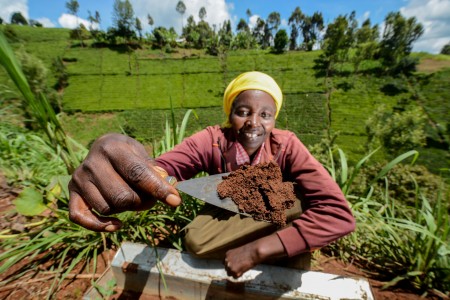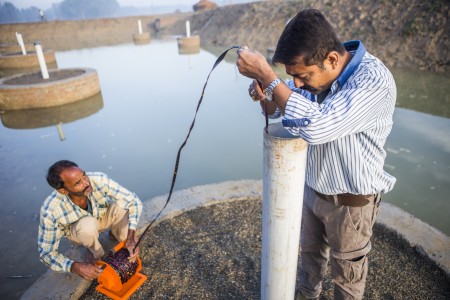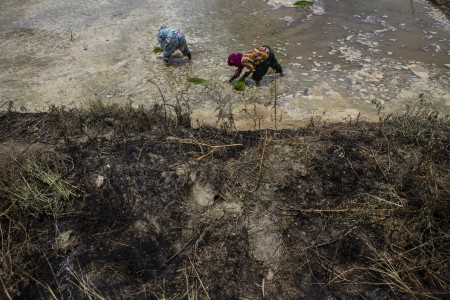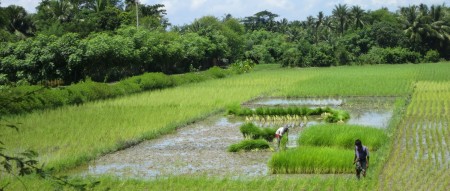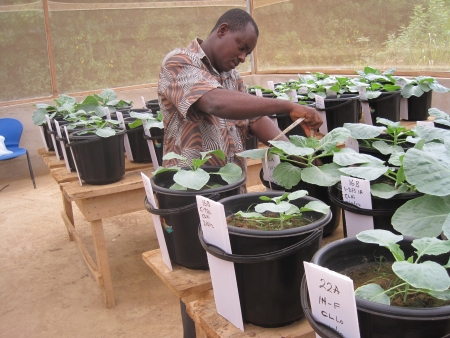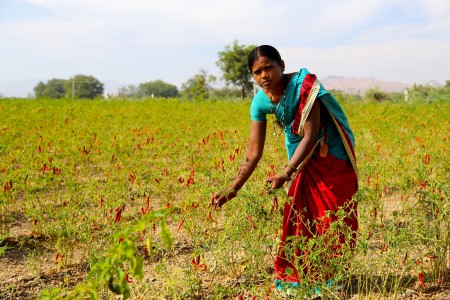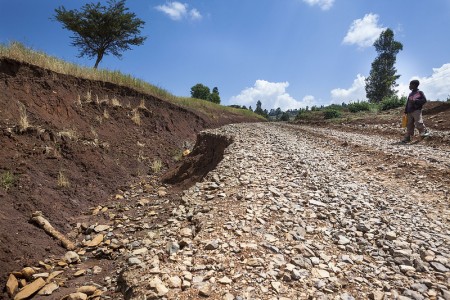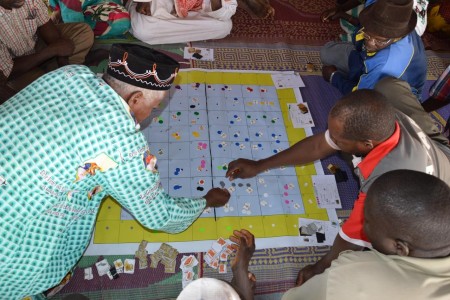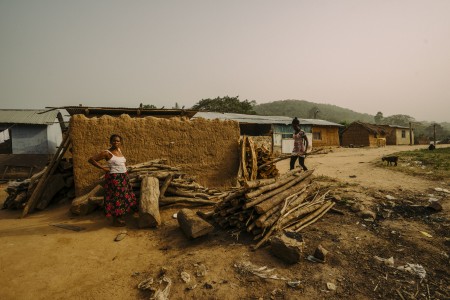The WLE 2016 Annual Report > Promoting innovative business models and institutions

Developing sustainable business models for solar-powered irrigation pumps
Making good use of surface and groundwater for irrigation in agricultural production has significant potential to build farmer resilience against food insecurity. Sustainable irrigation practices are known to raise agricultural productivity, improve rural incomes and help to ensure that farmers are better able to deal with the impacts of a changing and more erratic climate. But irrigation is a highly labor-demanding venture, and mechanization--such as using diesel pumps--add to the agricultural emission of greenhouse gasses.
As the world grapples with increasing climate variability, our dependence on irrigation is likely to intensify. Farmers in rural India, as in many other parts of the world, are becoming increasingly reliant irrigation with groundwater, so the need to use and manage this precious resource in a sustainable way has never been greater.
Incentivizing sustainable use
WLE is helping to scale up innovative solutions that help address overexploitation of groundwater in India and other countries by identifying effective economic incentives to reduce groundwater withdrawals.
For example, the successful Solar Power as Remunerative Crop (SPaRC) business model was developed and piloted by the International Water Management Institute (IWMI) and supported by the Tata Trusts through the IWMI-Tata Water Policy Program. SPaRC monitors on-farm electricity generation, income, water efficiency and crop production.
Following the success of the initial pilot, WLE researchers brought together six small-scale vegetable farmers in Anand province to form the world’s first solar irrigation cooperative - the Dhundi Solar Pump Irrigators’ Cooperative Enterprise (SPICE). With financial support from IWMI, each farmer installed a solar irrigation pump that was connected to the state power grid. The six farmers collectively signed a 25-year power purchase agreement, which allows them to sell surplus energy to the grid at Rs 4.63 per kWh.
Researchers found the farmers were extremely responsive to incentives that improved their productivity and incomes. They began selling electricity to the grid in May 2016, and since then, the number of kWh being used to pump groundwater for irrigation has been significantly reduced while the percentage of electricity being sold to the grid has risen considerably.
Increased incomes, more efficient groundwater use, and greener energy
In five of the eight months since SPICE began, the portion of electricity sold was higher than the proportion of electricity used to pump groundwater. This not only means a good financial return for farmers, but also more efficient irrigation practices and less groundwater extraction.
In addition, since neither petrol nor diesel is being used to run these pumps, these solar pumps help reduce carbon emissions and play a role in reducing emissions from agriculture. Exchanging India's electric tube well pumps for solar ones could reduce carbon emissions by 4-5% per year. This striking example of a triple win provides farmers with choices and additional income, supplies the local electricity board with more power and contributes to the conservation of water resources.
These results of SPICE are compelling and the model, if further scaled up to other suitable areas in India, offers multiple potential benefits for farmers, the state and the environment. SPICE also provides the India government with another route to achieve its objective of 100GW of solar capacity by 2022. These lessons can now be used to inform similar initiatives elsewhere.
Business thinking for better irrigation
This initiative forms part of a wider focus of WLE and IWMI on incentivizing the adoption of solar pumps to improve the sustainability of the irrigation sector by developing a framework for business models that support it. Integrating more business-oriented thinking and market-driven mechanisms into irrigation investments to ensure that the right incentives are in place makes them more financially and socially attractive. Researchers have been working on developing sustainable business models for solar-powered irrigation pumps by analyzing a range of investment scenarios and incorporating diverse potential investor perspectives.
This approach can foster sustainable intensification of agriculture through solar pump irrigation, not just in India, but also in other parts of the world. In Africa, for example, groundwater irrigation for agricultural production has only just begun to be tapped, with only around 1% of cultivated land in Africa being irrigated using groundwater. IWMI researchers, with support from WLE, have developed a series of continental-scale maps of renewable groundwater resources in Africa, which account for both human and environmental demands. These maps suggest that the area irrigated with groundwater could be expanded by a factor of 20, from the current 2 million ha to 40 million ha.
WLE has also been supporting and collaborating with the International Centre for Integrated Mountain Development (ICIMOD) to explore sustainable financing options that would encourage smallholder farmers in Nepal to adopt solar irrigation pumps.
Rigorous business models and financing options such as these will help to ensure that groundwater irrigation development progresses sustainably while enabling agricultural intensification goals to be achieved.
Learn more about what WLE is doing to build farmer resilience through sustainable groundwater use.
Towards sustainable intensification:
stories of real-world sciencewater, land and ecosystems research highlights
Phase 1
Since its inception in 2012, the CGIAR Research Program on Water, Land and Ecosystem (WLE) has developed scientific evidence and solutions for sustainably intensifying agriculture.
For WLE, sustainable intensification means more than minimizing agriculture’s environmental footprint; it means making sure that agriculture benefits both the planet and its people, providing global populations with food and nutritional security, resilience and livelihoods.
WLE researchers and their partners work across scales, disciplines and sectors to find sustainable, viable ways to transform agriculture, locally and at scale. Discover how the resulting solutions can lead to real-world change by exploring the briefs and stories below to.
New briefs on sustainable intensification
Achieving resilient food systems requires identifying incentives for sustainable farming, developing new policies and institutions, as well as working with diverse stakeholders to test and scale integrated solutions.
The program’s findings so far are summarized in a new series of briefs, Towards sustainable intensification: Insights and solutions.
The series aims to guide and support decision and policy makers, investors and others working to achieve sustainable intensification of agriculture. Each brief is focused on a topic of strategic relevance and provides analysis of and recommendations on how to place sustainability at the heart of agri-food systems.
in 2015 wle: field tested 62 technologies and natural resource management practices, helped 125,000 farmers to apply new technologies or management practices, supported improved technologies or management practices on 2.5 million hectares
Influencing policy and decision making
In 2015 WLE: established 41 multi-stakeholder platforms and influenced 200 policy processes
Promoting innovative business models and institutions
Facilitating community-led science
WLE in 2015 had 110,000 website visits and 43,000 views on CG-space and published 141 ISI publications and 94 open access publications




